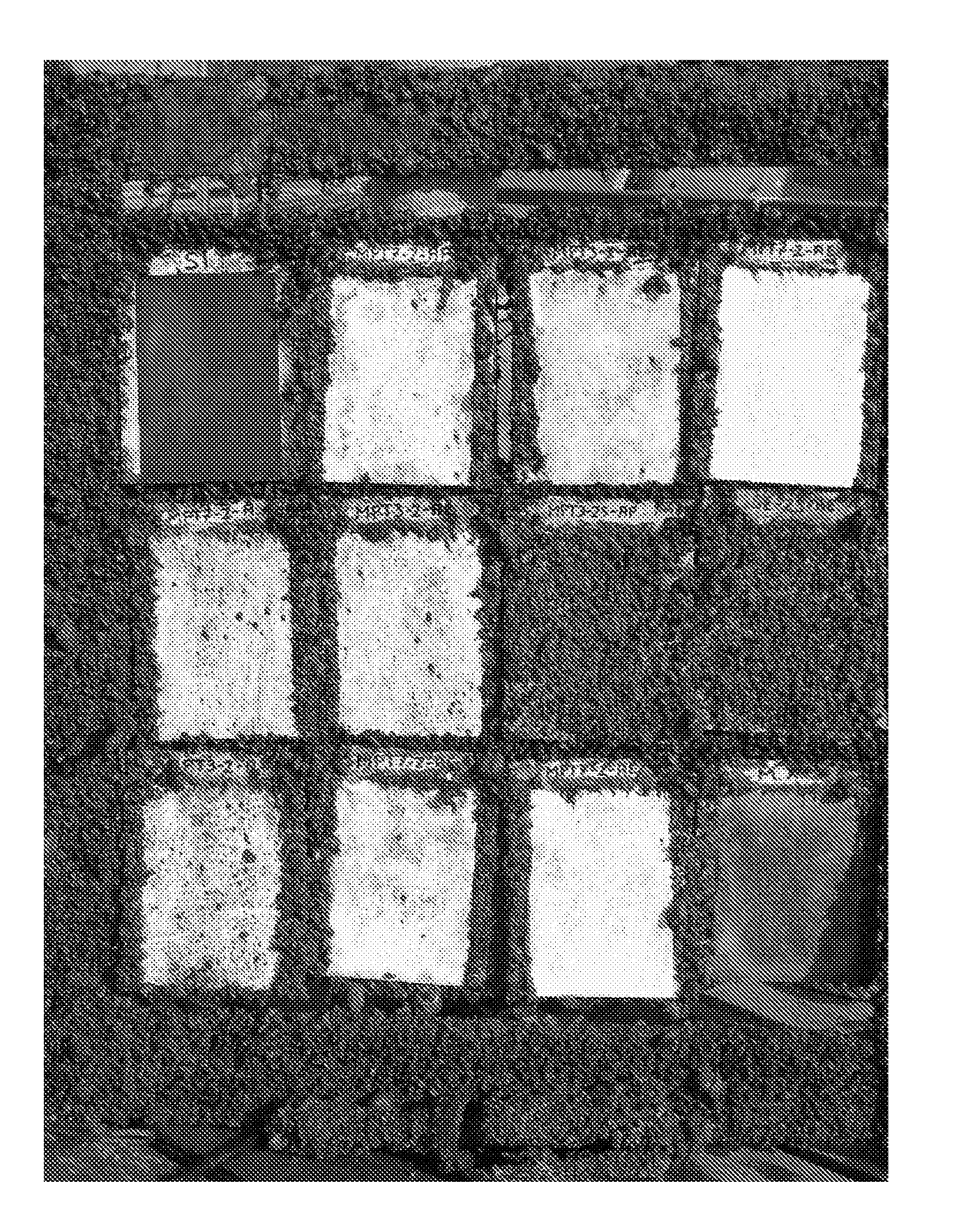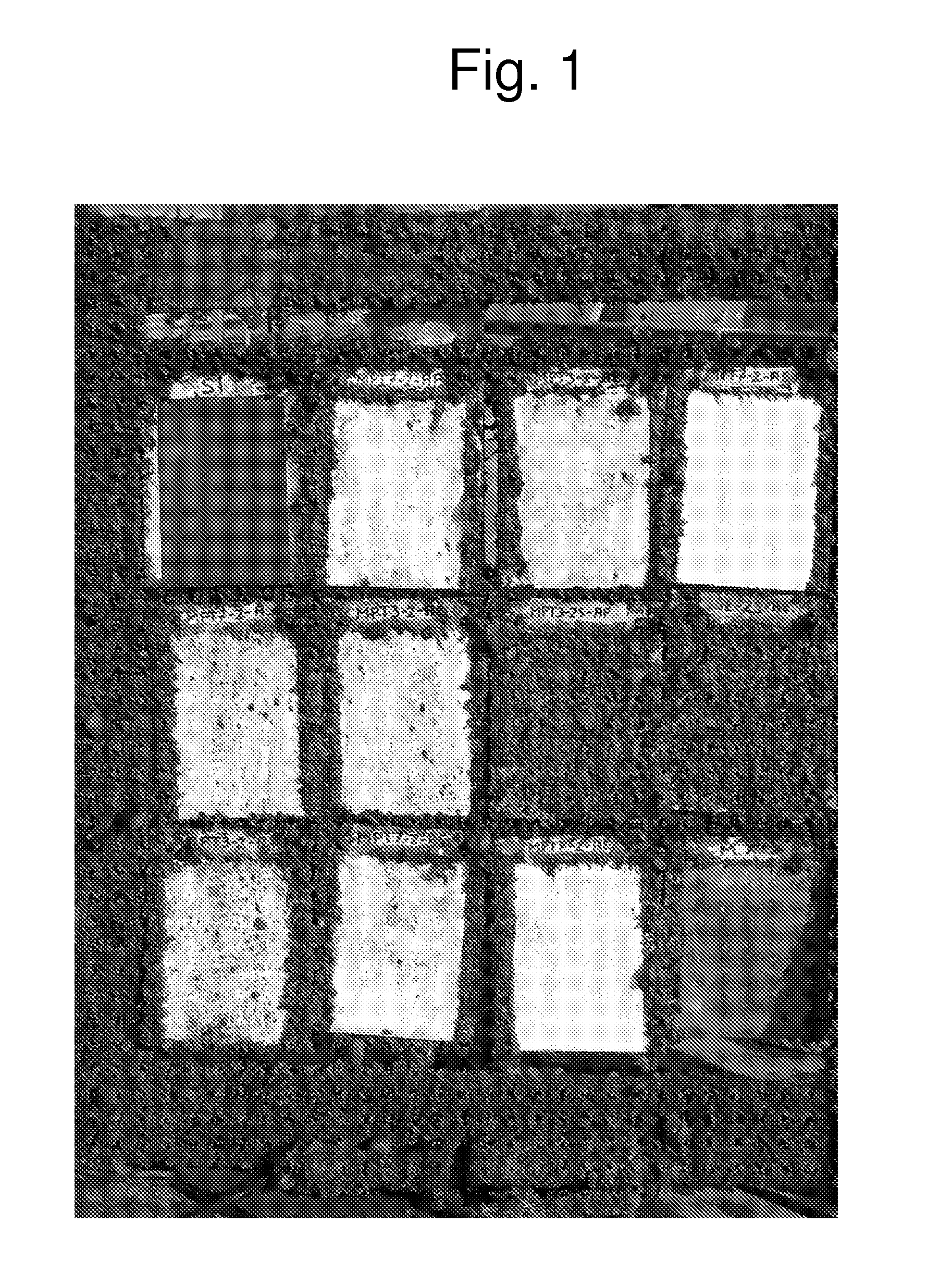Anti-fouling composition comprising an aerogel
an aerogel and composition technology, applied in the direction of biocides, peptide/protein ingredients, coatings, etc., can solve the problems that the coatings, however, are toxic to marine organisms, and achieve the effects of small pore size, high porosity, and large surface area
- Summary
- Abstract
- Description
- Claims
- Application Information
AI Technical Summary
Benefits of technology
Problems solved by technology
Method used
Image
Examples
example 1
[0450]The aerogel comprises siliciumoxid. The aerogel is obtained by hydrolysis of tetraalkoxysiloxane dissolved in alcohol. The alcohol is subsequently removed from the generated network by exchange with supercritical CO2. This solvent can be evaporated without collaps of the aerogel.
[0451]The aerogel is obtained by drying of a wet gel. During this process the liquid is removed from the nanopores in the gel. The drying is performed in the presence of supercritical CO2 or another supercritical solvent. It is important to go directly from the liquid phase to a supercritical phase and subsequently directly from the supercritical phase to a gas phase. An alternative to the supercritic drying is use of DCCA (Drying Control Chemical Additives), ambient pressure drying and freeze drying.
[0452]The wet gel is obtained by a SOL-GEL process. The SOL-GEL process is typically performed at temperatures lower than 100° C. For preparation of in-organic gells, typically metaloxides, the reaction ty...
example 2
[0453]The aerogel is obtained as described in example 1. The aerogel further comprises one or more enzymes and / or one or more other bioactive agents. The one or more enzymes and / or the one or more other bioactive agents are added to the alcohol during the generation of the network. This process results in encapsulation of the one or more enzymes and / or the one or more other bioactive agents in the aerogel. The process described in example 1 may be interrupted after preparation of colloid particles containing an enzyme as described in example 2. Completion of the network may be performed under addition of one or more different active components. Hereby the control of spatically distributed actiove compounds can be obtained
example 3
[0454]The aerogel is obtained as described in example 1 or 2. The aerogel further comprises 1-10% dimethyldialkoxysiloxane to adjust the hydrophobicity of the aerogel. Other alkoxysiloxanes may me used to obtain similar adjustments in hydrophobicity.
PUM
| Property | Measurement | Unit |
|---|---|---|
| pore size | aaaaa | aaaaa |
| concentration | aaaaa | aaaaa |
| concentration | aaaaa | aaaaa |
Abstract
Description
Claims
Application Information
 Login to View More
Login to View More - R&D
- Intellectual Property
- Life Sciences
- Materials
- Tech Scout
- Unparalleled Data Quality
- Higher Quality Content
- 60% Fewer Hallucinations
Browse by: Latest US Patents, China's latest patents, Technical Efficacy Thesaurus, Application Domain, Technology Topic, Popular Technical Reports.
© 2025 PatSnap. All rights reserved.Legal|Privacy policy|Modern Slavery Act Transparency Statement|Sitemap|About US| Contact US: help@patsnap.com


